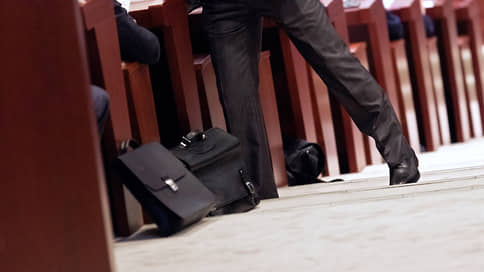The Deposit Insurance Agency liquidates the subsidiary “DIA UA”
[ad_1]

The Deposit Insurance Agency (DIA) is liquidating a subsidiary that supported the sale of non-core assets. At the peak of activity, the pool under the management of this management company amounted to about 30 billion rubles. Judging by the reporting, now the company does not conduct real activities and is unprofitable. The remaining “small part” of the assets was transferred to the DIA, the state corporation said.
DIA decided to liquidate the company established in 2015, designed to work with non-core assets, LLC DIA UA. This decision was published on September 4 on the Fedresurs portal.
As noted on the website, the task of the DIA UA was to work with assets acquired in the course of implementing measures to prevent the bankruptcy of credit institutions. The company performed the whole range of work with assets: from investment consulting to restructuring and development. A year before the creation of the DIA UA – in 2014 – the DIA was criticized by the Accounts Chamber for inefficiently managing assets.
In the early years of its existence, the company accumulated a much larger pool of assets than it does now. The total value of assets under management at the time when the company was less than a year old (by the spring of 2016) was about 30 billion rubles, according to archived data. The assets consisted of commercial real estate and land.
It follows from the company’s data that a number of land plots in Moscow, the Moscow and Pskov regions remained in its possession.
A Kommersant source familiar with the situation explained that, since there are few assets left, it no longer makes sense to keep a subsidiary. There is a long pause in the revocation of licenses, in 2023 not a single one was revoked, in 2022 the Central Bank removed three credit organizations from the market, while in 2014 38 banks were subject to license revocation.
The DIA told Kommersant that the assets of the liquidated “daughter” were transferred to the specialized division of the state corporation “in order to optimize costs.” The decision to liquidate the subsidiary is due to the fact that “an insignificant number of non-core assets” remain on the balance sheet of the DIA, they confirmed there. The state corporation also clarified that the DIA UA was engaged in supporting the assets on the balance sheet of the DIA, but did not take part in their sale. The company itself has been consistently unprofitable in recent years – in 2022, the net loss amounted to about 5 million rubles. against 53.75 million rubles. loss a year earlier. The DIA did not comment on the company’s unprofitability.
By the beginning of 2023, the uncovered loss was RUB 36.5 million.
At the moment, the company employs about 30 people, in 2022 the state corporation increased the cost of short-term remuneration to management personnel by almost 25% (up to 16.8 million rubles for the past reporting year).
Banking expert Aleksey Nechaev notes that DIA UA does not conduct real activities, and its net assets are declining, for example, from 51 million rubles. at the beginning of 2021, they decreased to 4 million rubles. at the beginning of 2023. “Although the name contains “asset management”, its income contains neither management fees, nor financial results from their sale (the assets themselves are also not visible on the balance sheet and trust management) or leasing,” notes Mr. Nechaev. The company’s only source of income is earmarked funding from the DIA, he says. It turns out that the company performed “purely technical functions” in asset management of the DIA. “It is not clear why these functions were allocated to a separate balance sheet,” concludes Alexey Nechaev.
At the same time, financial expert Andrei Barkhota notes that the company “DIA Asset Management” was created in the midst of clearing the banking sector according to the DIA model with a competition and the search for investors-sanatoriums. In the reorganization scheme through the DIA, a part of non-core assets had to be disconnected from the bank in which the financial recovery is being implemented, and worked out by the UA DIA itself. But given that the former volume of assets “has already been disposed of”, the expediency of the existence of such a company disappears, he concludes.
[ad_2]
Source link





